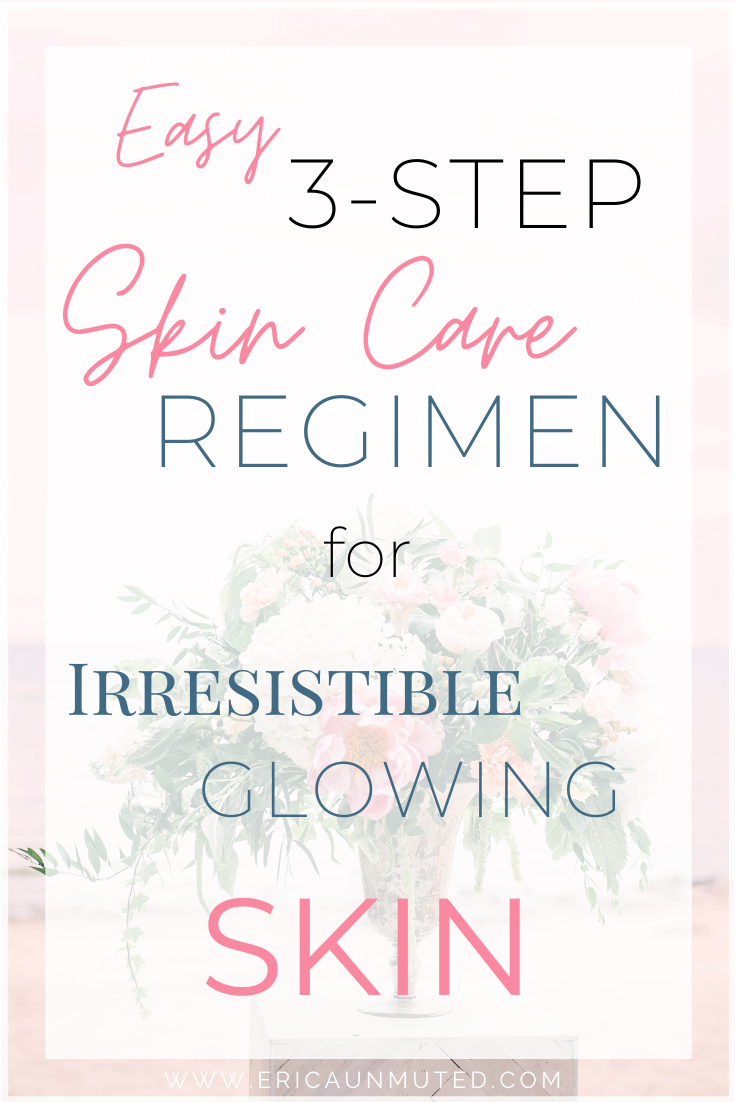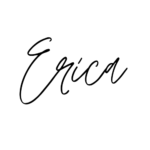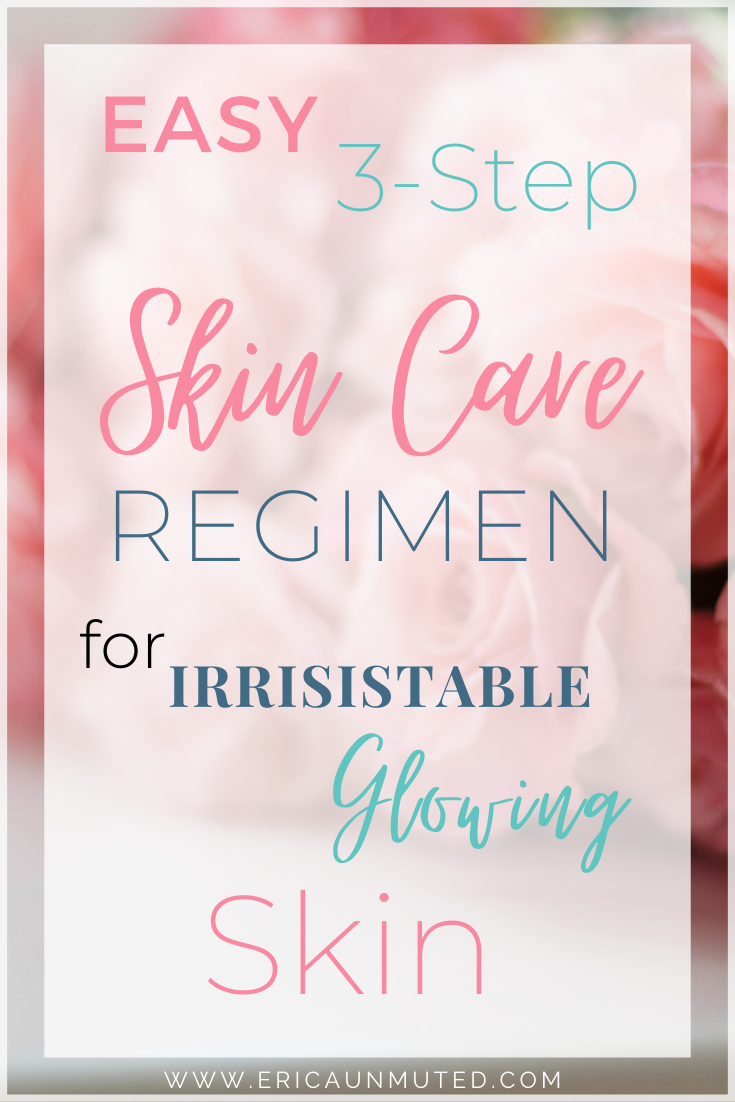
Your easy skin care regimen should include three steps: 1) Cleansing, 2) Exfoliation and 3) Moisturizing. That’s it! These three easy steps are the basis for every regimen. They will give you the most irresistibly beautiful skin ever!
There are some caveats of course, but let’s walk through your regimen together to help you understand what to do and why.
What are the best products to use?
This is one of the most frequent questions I get when it comes to skin care. What is the best cleanser to use? What’s the best exfoliant to use? The answer to this question is relative. As a Licensed Skin Care Therapist, in order for me to personally recommend products, I need to be able to see and touch your skin. Obviously I’m not able to do that for everyone I encounter online or even in person, so it makes it a little tough for me to really say for certain.
Because I’m a Licensed Esthetician, I have to recommend that you use professional grade products, because I know they work and will give you the best results. So if you really want to know what is the best cleanser to use, you need to see a licensed Esthetician. A good licensed Esty will give you a facial, look at your skin and tell you what professional grade product you should use for your skin.
So with that said, in this post I won’t really recommend specific products, but I will mention products/ingredients to stay away from. It’s more important to learn the method first, as then you’ll be more efficient in your regimen. I want to make sure you understand the method and reasoning behind it.
Before You Head to the Store
I realize not everyone is open to getting a facial, I understand that. This is why I’m writing this. I want you to have a resource to use when you head to the store to find products for you to use in your 3 Step Regimen.
Before you head to the store though, what do you have at home? Do you have something you can start using that has been dormant for a while? As long as it has’t been in your cabinet for 10 years, pull it out and start using what you have first before spending more money on new products.
But when you’re ready to head to the store for something new, pull this post up to remind you what to look for while you’re there. What types of characteristics of products you should be looking for.
So, here goes!
Where should I go to find my products?
For beginners, I recommend Ulta. There are beauty specialists there whose only job is to recommend products to you based on your needs. You won’t break the bank there, and you should be able to find a few good products to start your regimen with. You’re also free to browse on your own as well if that’s what you like!
If you want to invest a bit more, try a beauty counter at Dillards or Nordstrom. Ask the associates questions and get the information you need to make good decisions on what to try.
Step 1 – Cleanse
Cleansing your skin is a step that can’t be skipped in your regimen. I recommend cleansing the skin daily, both morning and night. Cleansing removes dirt, grime, and makeup from the day. At night your skin cells are resting and renewing just like you are as you sleep. By morning, you want to cleanse and have a nice fresh base for your moisturizer and makeup or bb cream if you wear it. You also wash away any dirt or bacteria from your pillowcase and bedding.
Choose your cleanser based on your skin type. Here are some characteristics of cleansers you should look for.
Characteristics of Cleansers by Skin Type:
- Normal Skin – Creamy or Gel Cleanser
- Oily Skin – Gel Cleanser
- Acneic Skin – Gel Cleanser with BHA (See below explanation of BHA)
- Dry Skin – Creamy Cleanser
- Combination Skin (Both Oily & Dry/Normal) – Gel Cleanser
- Sensitive Skin – Fragrance free, Gel or Creamy
- Aging Skin – Creamy Cleanser with AHA (See below explanation of AHA)
How Often: Daily, Morning and Night
Product Don’ts: Cetaphil, Sera Ve, any Facial or Body Bar Soap (including black soap in any form), any Drugstore Dupes, Acne Pads (Clearasil, Oxy 10), Dove, Noxzema
Step 2 – Exfoliate
Exfoliation is a HUGE step in your skin care regimen. In my esthetician program we spent so much time learning about this step. Exfoliation is a MUST in every regimen.
Regeneration and shedding of skin cells begins to slow down as you age. As dead skin cells pile up on your skin, it can give it a dull appearance, cause clogged pores, wrinkles and many other characteristics.
As a young teen, your skin cells shed and regenerate rapidly, 7 – 14 days. Then as an adult, generally it takes 30 days. And as you age, the number continues to rise. In your 30s and up it can take 60-90 days for your skin to regenerate, and it continues to go up from there.
This is why getting facials is so important! Getting Facials regularly will keep your skin looking young and fresh as you age.
It’s super important to keep exfoliation in your home regimen.
There are two kinds of exfoliation.
Physical Exfoliation
Physical exfoliants physically rub off dead skin cells. Examples of physical exfoliants are sugar, salt, coffee grounds and jojoba beads. A facial brush also counts as physical exfoliation. If you choose physical exfoliation, make sure you use a quality brand of product. Some lower quality brands use physical exfoliants that are low grade in nature and therefore may contain uneven beads of product. This can damage your skin and result in micro tears and abrasive damage.
Chemical Exfoliation: AHA + BHA
Chemical exfoliation uses AHA (Alpha Hydroxy Acid) and BHA (Beta Hydroxy Acid) to penetrate into lower levels of the skin and slough off dead skin cells. They eat away at the dead skin cells and cause a fresher, newer layer of skin to be revealed. Products that contain AHA and BHA are extremely effective and they are safe to use at home with the proper product knowledge and education. AHA and BHA’s are fruit and plant based (however Lactic acid is derived from milk).
Alpha Hydroxy acids are: Glycolic Acid, Lactic Acid, Malic Acid, Tartaric Acid, Citric Acid, Mandelic Acid
Beta Hydroxy acids are: Salicylic Acid
Characteristics of Exfoliants to Use by Skin Type:
Due to the nature of exfoliants, it’s best to read the labels on specific products because they come in so many different forms.
- Normal Skin – Label should say “for all skin types.”
- Oily Skin – Product should not be oil based, label should say “for oily skin.”
- Acneic Skin – Product should not be oil based, label should say “for acneic skin.” Can include BHA.
- Dry Skin – Label should say “for dry skin.”
- Combination Skin – Label should say “for oily skin,” or “for combination skin.”
- Sensitive Skin – Product should be fragrance free, label should say “for sensitive skin.”
- Aging Skin – Product should contain AHA, and label should say something referring to “anti-aging.”
How Often: 2 to 3 times per week
Product Don’ts: St. Ives Scrubs Including apricot and others
Step 3 – Moisturize
The process of cleansing and/or exfoliating the skin can strip some moisture away from it. The idea is of course to choose a cleanser and exfoliant that is appropriate for your skin type so as to prevent this. However even if your skin feels hydrated after these steps, you still need to moisturize your skin daily, morning and night. You want to infuse moisture back into your skin to keep it hydrated and maintain a proper ph balance. And yes, you need to moisturize if you have oily/combination skin. Just make sure it’s an oil free moisturizer.
This step is trial and error. You have to try things out, and if it seems like a) it’s not working, or b)it’s causing your skin to break out, then try something else! But you have to give things an honest try. Don’t try something for 2 days and say, “Oh well, it’s not working!” If it’s a moisturizer, give it a few days or at least a week.
Sometimes you may just need to use a little more product to achieve a good level of hydration. But you only know that by giving things a little time to learn the product and see how it acts on your skin.
Characteristics of moisturizers by skin type:
- Read the labels; the basic idea is whatever you choose should fit your skin type. The label should say, “for dry skin,” or “aging or mature skin.” Important things to note are if you have oily or combination skin, make sure your moisturizer is oil free. If you have sensitive skin, make sure your moisturizer is fragrance free.
Treating Your Skin
Treating your skin means you are using an added step to pinpoint particular issues you’re having with your skin. You can treat dryness, dark spots, large pores, acne, sun spots, rosacea, and a host of other things.
I’m not including this step in your easy regimen because it’s most important to make sure you’re consistently cleansing, exfoliating and moisturizing on a regular basis. If you’re doing these things alone you will see major changes in your skin.
Once you have your three steps down, you can begin learning more about ways to treat your skin for other issues that pop up. But really a lot of your issues will be eliminated once you’re on a consistent regimen. I’ll talk about treating your skin in another post, but here are some of the modalities of skin treatment, just so you’re aware: peels, masks, serums, steam, light therapy, dermaplaning, microdermabrasion.
Conclusion
It takes time to see changes in your skin, so be patient! The shedding cycle of your skin is generally 30 days (as I mentioned before, it varies with age) so it could take a few months before you really notice the changes in your skin. Yes, a few months. Take before and afters, and be consistent with your basic regimen. Take one picture before you start. Take another every week, or every month for 3 months. See if you notice your skin improving!
If you don’t notice any improvements, observe how your skin acts after you apply certain products. Switch out the products you feel may be giving your skin a negative reaction.
Again be patient, be consistent, and you will see results!
In the meantime check out my post on 2 really good moisturizers you can consider for your regimen if you have combination skin here!
I hope you have an amazing day today, and every day


